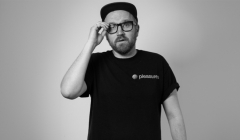
Creativity in 2025: Smaller, sharper, and a little less purposeful
Scott Dimbleby strives for a year of embracing fun and humour to offer audiences escapism.

Diverse approaches and insights can take the marketing industry to the next level

Neurodiversity has become somewhat of a buzzword in advertising. On our screens and in our feeds, marketers’ awareness of how to sell to neurodiverse individuals has improved considerably in the past decade.
However, there is still a lack of understanding on how to best support neurodiverse people within the marketing industry itself. How do we address this imbalance, to not just accommodate the needs of neurodiverse creatives, but also harness their approaches and insights, to take the marketing industry to the next level?
Firstly, what is neurodiversity? I think Harvard Health summarises it best: “[Neurodiversity is] the idea that people experience and interact with the world around them in many different ways; there is no one “right” way of thinking, learning and behaving, and differences are not viewed as deficits.”
Above all, the most important thing is to establish open communication with your neurodiverse employees to ensure you are supporting them in the best way possible.
Tabitha Wells, Creative Account Executive at JWI global
In essence, neurodiverse people perceive the world - and approach tasks - differently to neurotypical people. This is not better or worse, but simply offers an alternative perspective which can bring out fresh and interesting results. Many neurodiverse people are highly creative, are able to think laterally, and present unique solutions to problems. Furthermore, they are often able to retain more information about specific topics with relative speed and ease. This makes them a huge asset if you want to grow your team into industry experts and thought leaders.
For context, 15-20% of the global population are neurodiverse - and, as someone with ADHD, I’m one of them. In total, there are more than one billion of us. It is therefore clearly important to develop an understanding of neurodiversity, and to implement changes that would support so many people across the world.
Not only is a significant segment of the workforce neurodiverse, but so is a significant segment of the audience that will watch, read, listen and receive adverts. Having neurodiverse people play a key role in the creation of campaigns ensures that adverts will also cater to neurodiverse audiences, a demand that will surely continue to grow. The only way to create diverse work is by having a diverse workforce - so, without a wide range of experiences, how can we hope to communicate with those whose shoes we do not walk in?
However, neurodiversity brings challenges that can prevent people from reaching their full potential if a person’s specific needs are not taken into consideration. Searches for neurodiversity in the workplace have increased by 120% in the past year, and yet many workplaces are still not neurodiverse-friendly. This can lead to sensory overload, depending on the individual. It is therefore important to acknowledge that each neurodiverse person is unique, and will require different support systems.
For example, I love having multiple tasks on the go. However, some of my neurodivergent friends find this type of workload incredibly difficult. Above all, the most important thing is to establish open communication with your neurodiverse employees to ensure you are supporting them in the best way possible.
So, how can you better support neurodiverse people in the creative workplace?
5 Ways To Make A Neurodiverse-Friendly Workplace
Having neurodiverse people in your workforce is sort of like having superheroes join your team. They’ll conquer the problems you thought were insurmountable, and bring fresh ideas and creative thinking. However, they will also need support when the way they perceive the world prevents them from reaching their full potential.
Tabitha Wells is a creative account executive at JWI global. With a background in theatre and production, she has honed her writing and management skills to provide clients with the best service possible across creative and digital campaigns. A strategist who believes in the power of storytelling to change the advertising world for the better.
Looks like you need to create a Creativebrief account to perform this action.
Create account Sign inLooks like you need to create a Creativebrief account to perform this action.
Create account Sign in